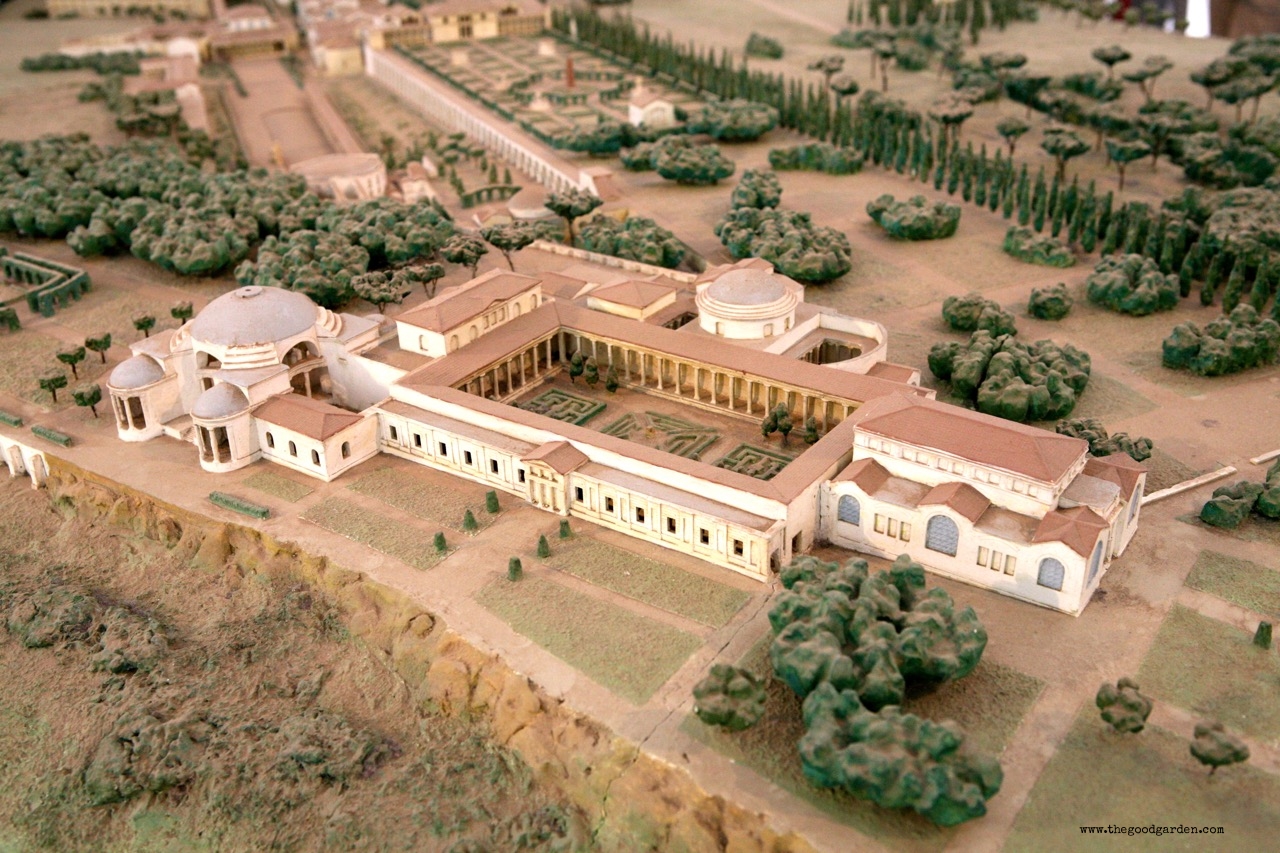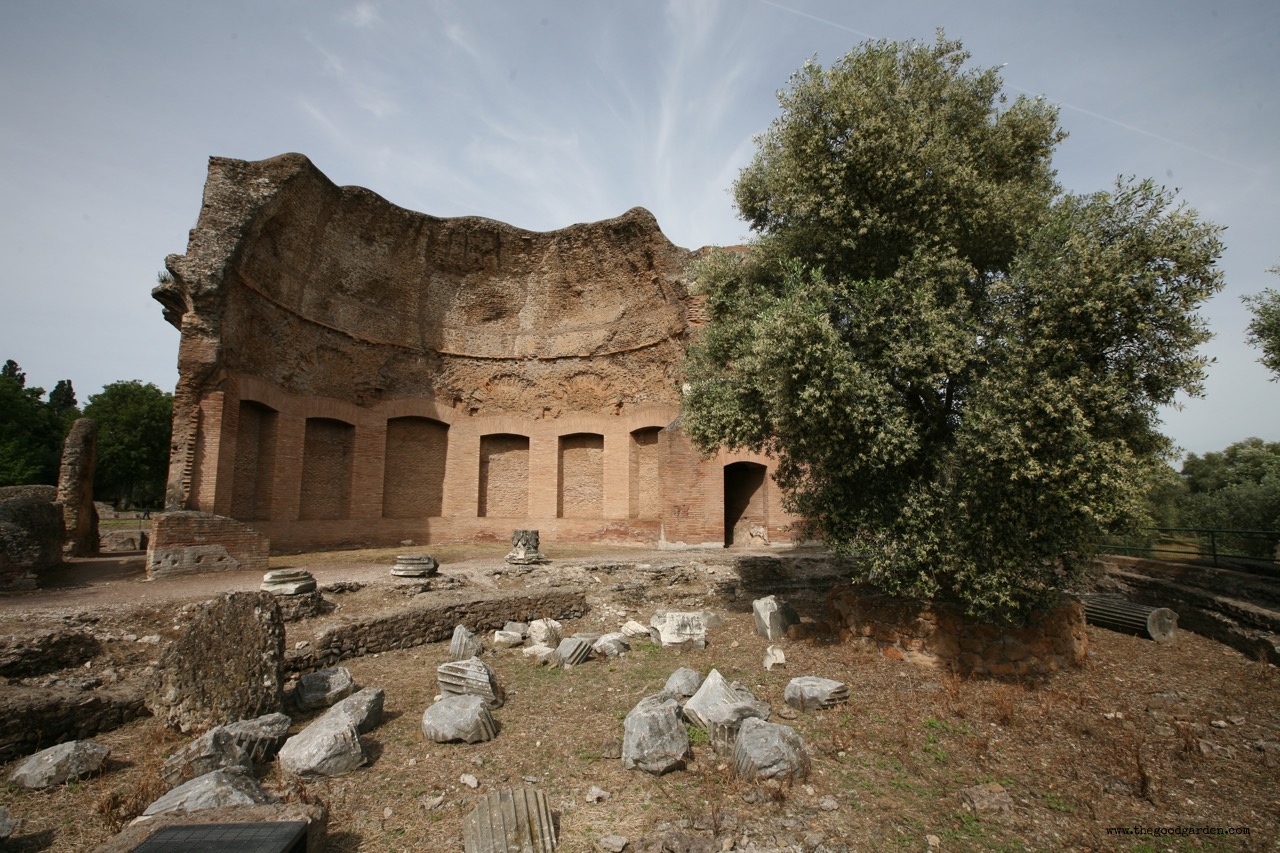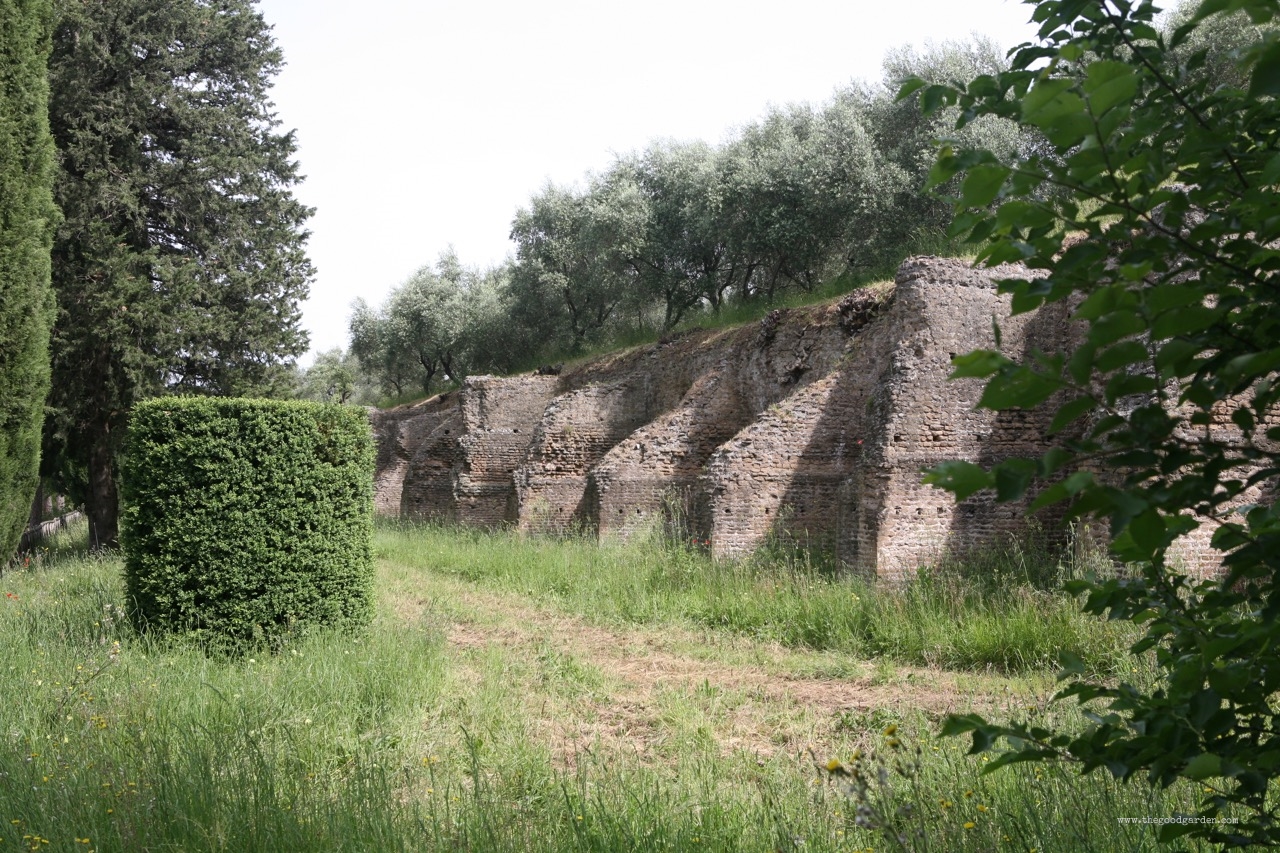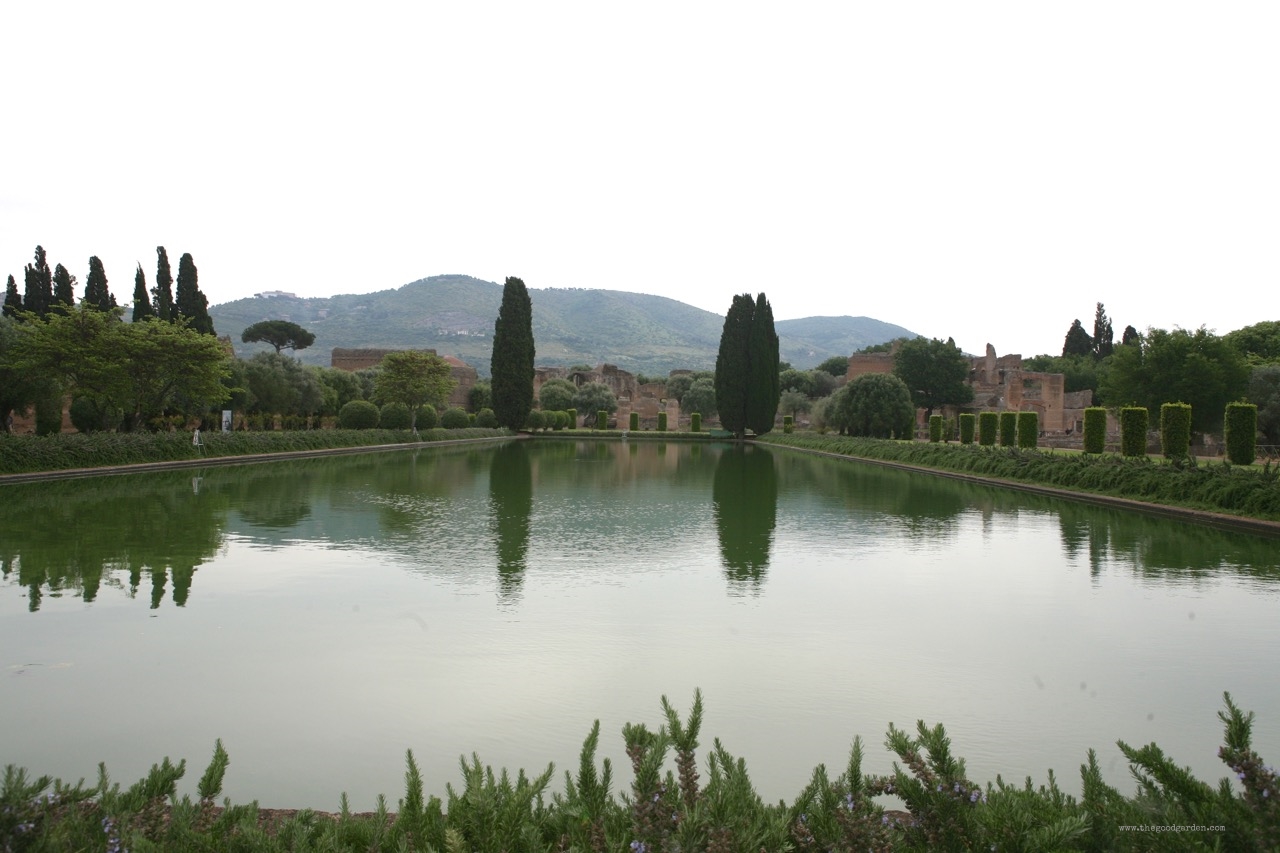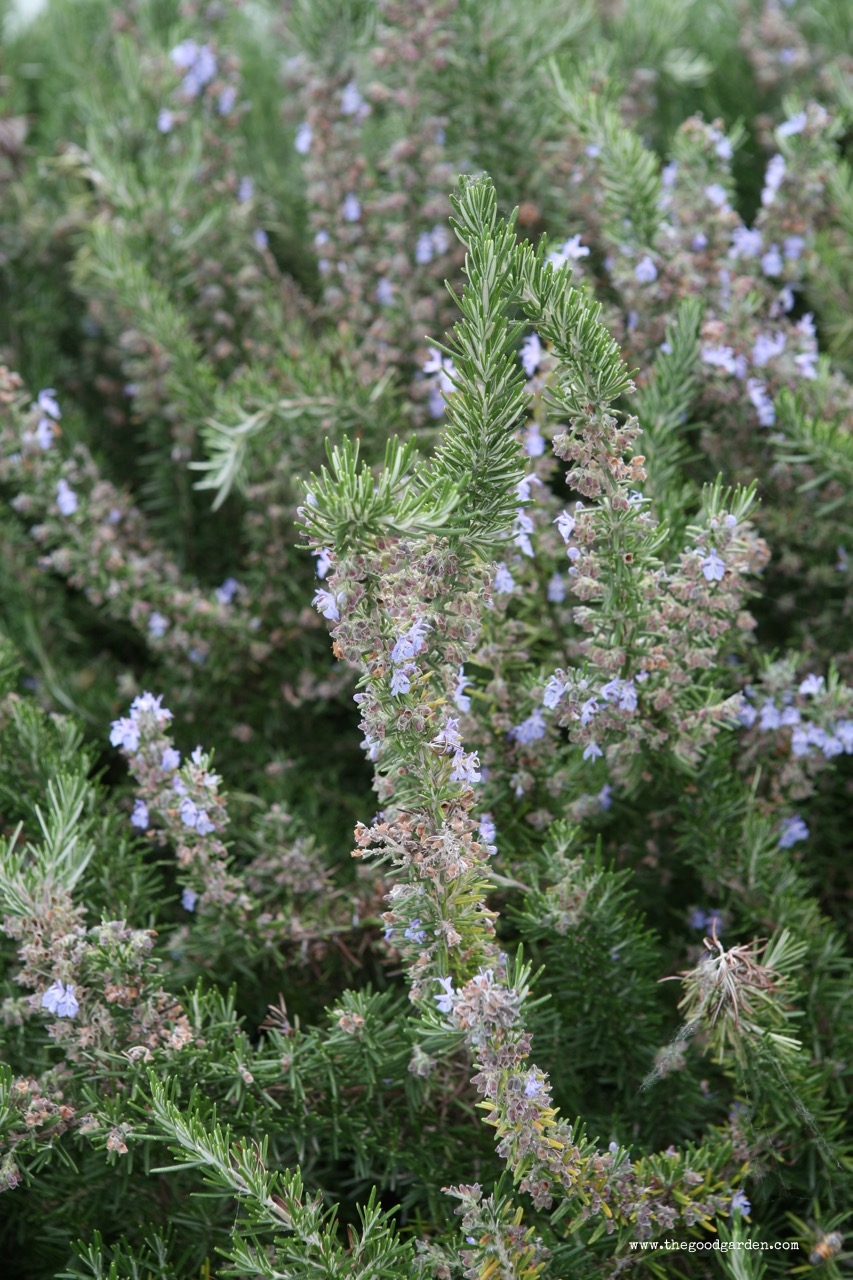For a blog about garden history, a good place to start is the oldest garden I’ve ever visited, Hadrian’s Villa or Villa Adriana. Near Tivoli, Italy, this garden was completed in 138 CE.
Today it is more an archeological site than a garden. However, the remains provide important clues about how the garden was laid out. In particular, we can see a series of organizing axes that connect the architecture to the garden and vistas. Geometry, symmetry, and repetition give a sense of control and order. Sculptures provide focal points, refer to great mythological stories, and reflect the wealth, power, and sophistication of the garden’s owner. Water adds luxury and destinations, and defines distinct spaces.
These elements clearly inspired garden makers in the 1500’s.
The Virtual World Heritage Library has prepared a wonderful web site and video to better understand the layout and use of the Villa, and what the gardens might have looked like when it was first built.


